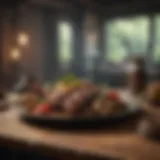The Unlikely Alliance of Mario and Feline Companions
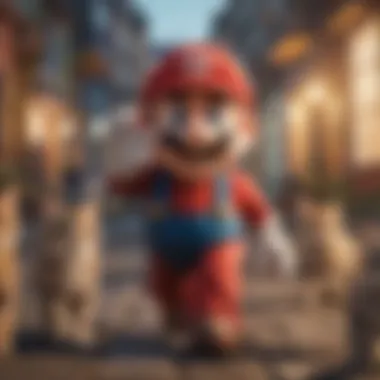

Intro
The world of gaming has a vast tapestry of characters, but few have the staying power and charm of Mario. The mustachioed plumber has traversed through countless adventures, yet surprisingly, one often overlooked aspect of his universe is the subtle—sometimes not so subtle—presence of feline companions. From power-ups to quirky characters, cats have slinked their way into the Mario franchise, each adding a unique flavor to the narrative and gameplay.
Beyond the glitz of platforming and power-ups, these cat-like figures reveal much about design choices, player engagement, and even the evolution of the franchise itself. There’s a depth to this exploration. It reflects not just on how players interact with these beloved characters, but also on the broader cultural significance within the gaming landscape. By taking a closer look at these interactions, one can appreciate the nuances that make the Mario franchise an enduring staple of gaming.
As we delve into this fascinating intersection, we will dissect unique gameplay mechanics, the art style and design choices, key storylines, and characters within the Mario cat universe. We will also touch on some intriguing gossip and trivia that illustrates how deeply ingrained these feline motifs are, making them essential for understanding the broader Mario narrative.
The significance does not stop there; there is more to the feline phenomenon than meets the eye. Their role in the ever-evolving world of interactive entertainment shows how even the smallest details can shape player experience. Hold onto your controllers as we embark on this exploration, dissecting not just what cats add to Mario, but what they symbolize within the context of gaming itself.
Intro to Mario and the Cat Phenomenon
The convergence of Mario, the iconic video game character, with feline figures opens a fascinating dialogue about how animals, particularly cats, find their niches within gaming narratives. At first glance, the blend of a mustachioed plumber and playful cats might seem an odd pairing. However, this curious union underscores broader themes, challenges, and opportunities in the realm of interactive entertainment.
Feline characters and elements within the Mario franchise highlight not only creativity but also the striking adaptability in game design. As players embody Mario in various adventures, they encounter cats, cleverly woven into the storyline and gameplay mechanics. From power-ups that transform our hero into a cat-like version of himself to notable cat characters that contribute depth and charm, these elements aren’t just for show. They enrich player engagement and add layers to the Mario universe.
The presence of cats in Mario games also reflects emotional connections that players form with animals, which can foster empathy and connection. The inclusion of these feline companions often symbolizes playfulness, curiosity, and agility—qualities that resonate on different levels with players. Moreover, these themes have proved beneficial in environments where character growth and narrative tension frequently characterize the gaming experience.
Examining the intertwining of Mario and cats, we find a unique narrative thread that captures more than mere gameplay mechanics; it sparks discussions on symbolism, artistry, and cultural influences.
In exploring this topic, we gain insight into the symbolic representation of animals, unearthing their role in shaping player experiences, and revealing how far-reaching their impact is on game design and narrative.
Overview of the Mario Franchise
The Mario franchise, created by Nintendo, is often credited with revolutionizing the gaming landscape since its inception in the early 1980s. The first appearance of Mario was in the arcade game "Donkey Kong," and since then, he has evolved into a versatile character that has starred in numerous games and genres—from platformers to sports simulations.
What stands out in the franchise is its ability to reinvent itself with each installment while maintaining the fundamental gameplay mechanics that fans adore. Engaging levels, unique power-ups, and diverse worlds create a playground for players of all ages, inviting them to explore Mario’s expansive universe.
Key aspects of the franchise include:
- Diversity in Gameplay: From classic platforming to racing and RPG elements, Mario’s world is rich with variety.
- Cultural Appeal: The franchise transcends geographic boundaries; players worldwide connect with Mario's adventures, underscoring his status as a global icon.
- Continual Innovation: As technology progressed, so did the franchise, seamlessly incorporating new gameplay elements that captivate audiences.
The Role of Animals in Gaming
Animals have always played a distinctive role in video games, appearing as companions, opponents, or power-ups. In the gaming world, they often serve symbolic roles or enhance narratives, offering players a connection to the game universe that diverges from human characters.
Consider the following points on animal roles in gaming:
- Character Depth: Animals can embody certain traits—like agility or cunning—that amplify character traits and move narratives forward.
- Player Connection: Many players resonate with animal characters, finding parallels to their relationships and experiences, which enhances emotional investment in the game.
- Mechanics and Dynamics: Animal interactions often introduce exciting new gameplay mechanics, enriching player experiences and offering fresh challenges.
As we continue to explore the landscape of Mario and cats, the overarching themes will reveal the profound impact of this unlikely alliance, forging connections that transcend the screen.
Historical Context of Feline Characters in Gaming
The journey of feline characters in video games is a fascinating narrative, reflecting changes in gaming aesthetics, storytelling techniques, and cultural influences. When considering the Mario franchise and its incorporation of cats, understanding the historical context serves as a vital backdrop. It allows us to appreciate how these furry companions have shaped not only the gameplay mechanics but also player experiences. Cats often symbolize independence and grace, attributes that resonate well with gamers, enhancing the narrative landscape.
As we unfold this journey, it’s crucial to explore the early representations of cats, which established a foundation for their eventual prominence in gaming. From early pixelated characters to more sophisticated designs, the evolution mirrors the technological advancements in the industry, illustrating how cats secured their places both as playable characters and as symbols within gaming culture.
Early Representations of Cats in Video Games
Feline representations in video games trace back to the very beginnings of the medium. One can recall the 8-bit era when a simplistic pixelated cat would appear as an enemy, ally, or even as a joke element. For instance, Neko in Neko: Atsume, an early cat simulator, offered players the opportunity to lure various cats. Meanwhile, in the 1980s, we saw cats pop up in titles like Tom & Jerry, where they provided a playful contrast to the iconic mouse.
These early characters often lacked depth but set the stage for more complex and nuanced portrayals. The simplification of feline characteristics was intentional; it helped developers address the technical limitations of the time but also tied into the cultural associations with cats—mysterious, swift, and often unpredictable.
As gaming technology advanced during the 90s and into the 2000s, cats became more than just searchlights or obstacles. They evolved into integral parts of narratives. Characters like Navi from The Legend of Zelda provided guidance much like a cat's elusive nature serves to both frustrate and enchant its owner—always just out of reach. This leads to a richer gameplay experience where feline traits are embraced, providing depth to not just the characters, but the overall narrative arc.
Evolution of Animal Characters Over Time
Reviewing the evolution of animal characters unveils a remarkable shift in how they are designed and represented. Initially, many game developers viewed animals through a binary prism—heroes or villains. However, over time, game designers began to recognize and exploit the versatility of animal traits.
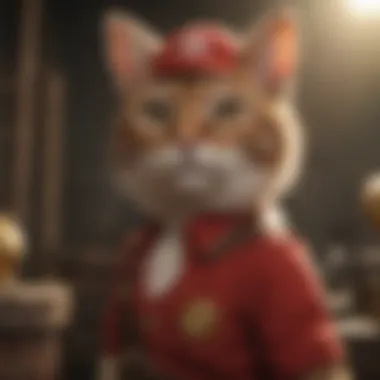

- Complex Playable Characters: Cats began to transition into playable characters, reflecting a shift towards more engaging narratives. Mario’s Cat Power-Up, for instance, allowed players to climb walls and scratch enemies, directly endorsing feline capabilities in gameplay.
- Thematic Integration: The integration of cats into extensive narratives became more common. This manifested as emotional arcs that resonate with players. For example, in the popular game Okami, players embody Amaterasu, who takes on a wolf's form but exudes feline grace, relying on stealth and agility throughout the gameplay.
- Cultural Symbolism: Today, cats often serve as symbols of freedom and mystery, which makes them appealing to players. As gamers, we resonate with these notions, leading to an emotional investment in feline characters.
Over the decades, the portrayal of felines has evolved from simple representations to complex, multifaceted characters. Gaming has embraced their charm and societal symbolism, creating an enduring legacy that enhances the allure of the gaming experience.
Cats in Mario Games: A Closer Look
The presence of feline motifs in the Mario franchise isn't just a passing notion; it carries weight and significance. From whimsical power-ups to dynamic gameplay mechanics, cats have woven themselves into the very fabric of the Mario universe. This section aims to shed light on how these furry elements enhance player experience, enrich the narrative, and contribute to an overall gaming landscape that resonates with audiences of all ages.
Preamble of Cat Power-Up
The introduction of the Cat Power-Up in "Super Mario 3D World" was a game-changer. This power-up was not merely for show; it opened up new avenues for gameplay. When Mario dons the Cat Suit, he dons not just an appearance but an arsenal of abilities.
Notably, this transformation allows players to scale walls, claw enemies, and perform a unique pounce maneuver. The whimsical feeling of letting Mario climb up walls or leap gracefully from platforms is akin to watching an acrobat who has memorized his routines. The Cat Power-Up merges playfulness and strategy, pushing players to explore levels in imaginative ways.
In this game, a player gets to experience both the charm and tactical shifts that arise from this feline-themed mechanic. It’s like adding a dab of spice to a otherwise complex dish—it complements rather than overwhelms.
Analysis of Cat Mario Mechanics
Examining the mechanics behind Cat Mario reveals much about gameplay design philosophy. The mechanics are simple yet effective.
- Movement: One of the standout features includes a fluid and graceful movement set that evokes feline agility. The ability to run, climb, and leap with ease provides a tactile sensation that players can feel in their fingers.
- Combat System: Cat Mario’s fighting capabilities allow for unique player interactions, as enemies need to rethink their strategies when facing a rather nimble Mario. The felinesque claws emerge as both offensive tools and defensive shields.
Here’s where it gets interesting: when players engage in combat as Cat Mario, a new layer of challenge unfolds. Players aren't just jumping on foes; they're navigating a dance of precision and timing, reminiscent of a cat stalking its prey.
Each match-up becomes a kitten-vs-mouse scenario—a thrilling, almost playful engagement with the game's world. This invites players to not only think tactically but also engage emotionally, providing an enriching gaming experience that’s often absent in conventional jump-and-run games.
Significance of Feline Attributes
Feline attributes in Mario games encapsulate more than just aesthetics. They tap into cultural perceptions and emotional connections with cats. Throughout history, cats have been revered in various cultures, often symbols of independence, agility, and mystery. By attributing these characteristics to Mario, the developers create a multi-layered narrative.
- Independence and Exploration: In the context of gameplay, the agility of Cat Mario embodies a spirit of independence. Players can explore levels at their own pace, choosing to delve into hidden areas or rushing through main objectives.
- Symbol of Mystery: Cats are often viewed with a degree of mystique. Incorporating this into Mario allows the franchise to flit between the known and the unknown. Players encounter challenges that require not just skill but also the willingness to embrace uncertainty.
"Cats in gaming represent a blend of whimsy and strategic depth, proving that their relevance extends far beyond simple character design."
Character Development: Feline Elements in Mario
The makeup of characters in the Mario franchise has always blended physicality with personality, but the championing of feline elements introduces both novelty and depth. Cats hold a unique position not just as animated sprites but also as counterparts that shape gameplay and narrative progression. These feline representations resonate not only with gameplay mechanics but also with cultural symbols that many players recognize and admire.
By weaving feline traits into character development, the narratives become enriched with unique abilities, providing players varied strategies, challenges, and engagement styles. This melding of the familiar cats with the well-loved Mario universe can spark interest in players, evoking a sense of familiarity while at the same time adding freshness to the established lore.
Major Cat Characters in the Mario Universe
Cat Mario
Cat Mario, introduced in Super Mario 3D World, is a prime example of how gameplay and character intersect beautifully. The primary aspect of Cat Mario is its ability to climb walls, giving players a new perspective in a world that was previously flat and linear. The characteristic feline agility allows heightened mobility and exploration opportunities, enriching the gaming experience.
Many view Cat Mario as a transformative character choice, not only due to its quirky appeal but also for its practical enhancements in gameplay. This character allows players to negate some challenges presented in levels due to its unique skill set, making it a popular choice among gamers looking for both strategy and fun.
However, this form also has its drawbacks—while agility is boosted, some players may find themselves relying too heavily on the Cat power-up, possibly missing out on other gameplay techniques that offer different kinds of fun.
Meowser
On the flip side, Meowser portrays a cat-natured antagonist that enhances the narrative depth in Mario games. This character, essentially King Bowser with feline characteristics, expresses an intriguing blend of dominance and whimsy. Meowser retains destructive abilities while offering a softer edge with its playful feline features.
The key characteristic of Meowser lies in its fusion of classic villainy and playful antics, making it a beloved figure for many players. Enemies like Meowser provide a unique challenge and tap into players' nostalgia while keeping gameplay fresh. A drawback, however, is that this quirky villain might, at times, feel less threatening compared to traditional Bowser, hence potentially dampening the tension during boss battles.
Cat Peach
Concerning Cat Peach, she brings yet another flair to the saga with her charming design and special abilities. This character adeptly merges the iconic Princess Peach persona with feline traits. Her presence signifies a balance in power alongside agility, which resonates well with gamers who appreciate character depth alongside visually appealing designs.
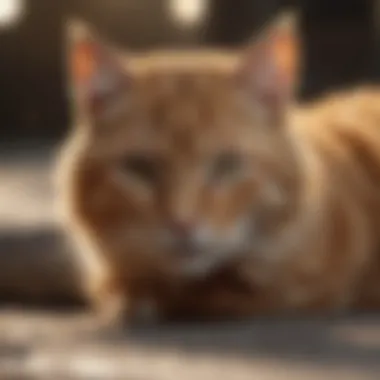

The unique feature that stands out for Cat Peach is her ability to harness healing powers, offering support and strategy to players navigating through challenges. This trait expands the gameplay depth significantly. However, you might find some players arguing that while Cat Peach is appealing, she may inadvertently lean towards making gameplay a tad bit easier, thus affecting the challenge.
Felis and the Quest Narrative
The presence of feline elements significantly shapes the quest narratives across Mario games. Felines, in general, symbolize mystery, agility, and playfulness—qualities that echo in the larger contexts of Mario's adventures. Whether it’s a quest for rescuing Princess Peach or battling the likes of Meowser, the themes surrounding feline attributes can serve as metaphors and plot devices that influence how players perceive missions.
As gaming evolves, fleshing out feline elements shapes not just character dynamics but also enhances overall storytelling. The integration of these characteristics can often lead to new plot twists, enhancing the originality of the narrative far beyond simplistic good versus evil tropes.
Cultural Impact of Cats in Video Games
The presence of cats in video games, especially in franchises like Mario, opens up a rich tapestry of cultural interpretations and implications. Feline characters carry layers of meaning that reflect not just gameplay mechanics but also our collective understanding of these creatures. They serve as an intersection between playful engagement and deeper narratives that resonate across multicultural lenses.
Cats have long been imbued with a variety of symbolic meanings across different cultures, portraying concepts from independence to mystery. In games, the representation of cats taps into these existing cultural narratives, enhancing player connection to the characters. Incorporating cats into gaming not only expands gameplay but also enriches storytelling, making it an important aspect of character design and player experience.
The Symbolism of Cats Across Different Cultures
Cats are often seen as more than just pets; they encompass a plethora of symbolic meanings rooted in the histories and folklore of various cultures. For instance, in ancient Egypt, cats were revered, associated with deities like Bastet, symbolizing protection, fertility, and family. In contrast, Japanese culture celebrates the maneki-neko, or the beckoning cat, believed to bring good fortune and prosperity. Such representations in video games can send powerful messages to players, often subconsciously connecting them with larger themes of luck, safety, or even cunning.
In video games like Mario, these feline symbols gain a playful twist while still preserving their core essence. For instance, when players control characters like Cat Mario, the playful agility reflects the sleek and stealthy nature of real-life cats. This not only enriches the gameplay but also allows for a broader exploration of thematic depth. The importance of feline symbolism can be seen where characters embody traits historically associated with cats, whether it's cleverness, charm, or independence.
Cats as Icons in Gaming Communities
Over the years, cats have become more than just game characters; they’ve secured their places as cultural icons within gaming communities. The cute, quirky, and often humorous depictions of cats resonate with players, leading to their emergence as beloved figures in fan art, memes, and various merchandizing ventures.
This phenomenon is especially visible in discussions on forums like reddit.com or social media platforms like facebook.com. The level of engagement with cat-related content within these communities demonstrates the attachment gamers have to feline figures in their favorite franchises. Engaging art and narratives built around characters like Cat Peach or even the menacing Meowser contribute to ongoing dialogues about love for these characters.
Moreover, cat-centric fan groups continue to grow, with enthusiasts sharing everything from fan art to cosplay, showing how deep-rooted the affection for these characters really goes. The commodification of this affection via merchandise—like plush toys and themed apparel—highlights the economic impact and enduring popularity of cats in gaming culture.
"Felines in gaming aren’t just about aesthetics; they resonate on emotional and cultural levels, making them relatable and cherished by players of all backgrounds."
Ultimately, the cultural impact of cats in video games, particularly within the Mario franchise, is multi-faceted. From traditional symbolism to their roles as icons in gaming communities, feline representations create a unique blend of playful engagement and meaningful representation. These elements reflect evolving game designs and player relationships, paving the way for future explorations of cats in the gaming universe.
Fan Culture and Cat Themes
The intersection of fan culture and cat themes within the Mario franchise is a vibrant tapestry that reflects varied player interests and creative outputs. This phenomenon not only deepens engagement but also enriches the community dynamic around the games. Mario has become a canvas for fans to express their interpretations, especially through the lens of feline companions.
Fans find a unique connection to cat characters because cats often symbolize independence and charm, traits that resonate deeply with players. In Mario’s whimsical world, cats break the mold of traditional game characters by adding layers of playfulness and intrigue. This makes the gaming experience not just about play, but about community and shared interests.
The critical aspect here is that fan culture thrives on creativity. Those involved in fan art and community creations do more than just reinterpret characters; they create a celebration of identity. These creative outputs also serve as tangible expressions of enthusiasm, allowing fans to communicate what Mario, including its feline elements, means to them personally.
Fan Art and Community Creations
As cat characters became more prominent in the Mario universe, fans took to various forms of art to pay homage. From digital illustrations to plush toys, there’s a burgeoning ecosystem of fan-made content out there. Artists often interpret Cat Mario, Cat Peach, or Meowser with their unique styles. The diversity found in this artwork showcases both technical skill and imaginative takes, bringing a refreshing perspective to established characters.
Features of fan art can include:
- Digital Art: Fans harness software like Photoshop or Procreate to create vibrant depictions that reimagine these characters in countless scenarios.
- Cosplay: Players dress as their favorite feline-inspired characters, merging the realms of animation and reality during gaming conventions.
- Street Art: Murals and graffiti inspired by the cute, whimsical nature of Mario cats pop up, adding visual interest to urban spaces.
The sense of community generated through these contributions is palpable. Social media platforms, such as reddit.com and various fan groups on facebook.com, serve as showcases for these creations, while also fostering discussions about the favorite aspects of Mario and his feline friends.
Merchandising and Commercialization of Cats
The intersection between fan culture and the commercialization of cat characters reflects a unique alliance of creativity and business. The rise in popularity of feline figures in the Mario series has led companies to capitalize on this momentum. Available merchandise ranges from plush toys to clothing emblazoned with Cat Mario’s cheeky grin, enabling fans to bring a piece of their beloved franchise into their daily lives.
Key merchandising considerations include:
- Plush Figures: Soft toys capture the essence of Cat Mario and other feline characters, appealing to fans of all ages who wish to cuddle up with their favorite gaming icons.
- Apparel: T-shirts, hoodies, and socks featuring feline designs have become popular, allowing fans to showcase their love for the franchise publicly.
- Accessories: From keychains to themed phone cases, the proliferation of merchandise reflects the enduring popularity of cat characters in Mario games.
Overall, the interplay between fan culture and commerce bolsters the presence of cats in gaming narratives. This symbiotic relationship not only sustains the franchise's relevance but also offers fans a way to be part of something larger than themselves. As long as the love for cats flourishes within the Mario universe, the future look bright for both fan creativity and merchandise that celebrates this charming alliance.
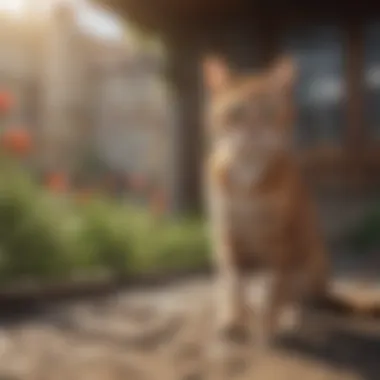

Comparative Analysis with Other Game Franchises
In diving into the realm of Mario and its feline companions, it becomes crucial to broaden our perspective by examining how these characters and themes resonate across other gaming franchises. This comparative analysis not only showcases the uniqueness of Mario's approach to feline representation but also positions it within the larger context of video game design. Cat-like figures often embody certain traits—agility, mystery, and adaptability—that resonate deeply with players, and understanding their role in different franchises enhances our appreciation of Mario's choices.
Cats in Other Major Franchises
The presence of cats in various game franchises highlights their widespread appeal and versatility. Consider the following examples:
- Final Fantasy XIV: The game features the Miqo'te race, humanoid characters inspired by cats. Their lore and tribal culture integrate feline characteristics, making them integral to the game's narrative depth and diversity.
- Sonic the Hedgehog: The character of Big the Cat stands out in the franchise as a gentle giant who contrasts the fast-paced action. This adds a layer of whimsy and showcases the notion of friendship across different species.
- Stray: This recent title has taken the gaming world by storm with its unique premise of a lost cat navigating a dystopian city. Here, the gameplay focuses on exploration and emotional storytelling, proving that cats can lead narratives in innovative ways.
The ways in which cats are depicted throughout these games illustrate how various developers harness feline traits to shape gameplay mechanics and narrative arcs, differing significantly from Mario's tone and approach. In Mario games, cats often serve as a playful mechanism to enhance mobility and gameplay elements rather than as narrative pillars.
Influences and Inspirations in Game Design
The incorporation of feline elements in gaming isn't just coincidence; it's a testament to the influence and inspiration drawn from both art and nature. Popular culture has a long-standing relationship with feline imagery, which developers cleverly adapt into their games.
Here are a few key influences to consider:
- Folklore and Mythology: Cats are often depicted in mythology as mystical creatures. For instance, ancient Egyptian lore celebrated cats, associating them with deities like Bastet. This symbolism seeps into gaming, where cats may be portrayed with magical or high-speed abilities.
- Artistic Design Trends: Many art styles in gaming capitalize on the sleek, elegant features of cats. Characters exhibit exaggerated feline traits that appeal visually to players. From whimsical to realistic interpretations, the design choices reflect broader artistic influences across cultures.
- Player Engagement: Game designers understand that players are drawn to an emotional connection with characters. Feline companions provide a familiar yet sometimes unpredictable dynamic. They invite players to explore the depth of their personalities, making for richer gameplay experiences.
"Cats add an element of playfulness that can balance the heavier themes often present in gaming narratives. Their agility and independence resonate with players, making them ideal companions in virtual worlds."
In summary, the analysis of cat representation in franchises beyond Mario reveals a tapestry of influences, showcasing how these characters are carefully crafted to meet narrative and gameplay needs. This not only enriches our understanding of Mario's feline themes but also reflects an industry-wide appreciation for these agile companions. As game design continues to evolve, one can only wonder how cats will be interpreted in future installments across the industry.
The Future of Cats in Gaming
Feline characters have always been an integral part of the gaming universe, particularly within the Mario franchise. However, the trajectory looking ahead reveals a distinctive opportunity for developers to embrace the charm and mystique of cats in their future projects. The significance of this topic lies not just in nostalgia but in how these characters can enrich gameplay, evoke emotions, and connect to a diverse audience. Players of all ages resonate with cats—be it through their playful antics or their high-spirited independence. This evolving relationship could very well shape the next wave of interactive experiences.
Emerging Trends in Cat Representation
As we look towards the horizon of game design, certain trends regarding cat representation are beginning to emerge. More developers are reaching beyond conventional character archetypes to include felines that showcase a broader range of personalities. We’re seeing cats portrayed as not just sidekicks but as complex main characters with their own narratives.
Consider games like Cat Quest, where players navigate a whimsical world full of feline characters, utilizing various skills and abilities unique to cats. Such games have paved the way for more nuanced portrayals, highlighting cats as not only companions but also as key players in the gaming world. The trends are clear:
- Diversity in Character Design: Developers are actively working to craft individual personalities for their feline characters instead of relying on generic representations.
- Emotionally Resonant Stories: Stories revolving around cats that depict their trials, triumphs, and unique perspectives can resonate deeply with players, enhancing engagement.
- Gameplay Mechanics: More innovative gameplay involving cats' instincts—such as agility and stealth—will likely become a focus, offering new dynamics in gameplay.
Anticipating New Character Prolusions
The anticipation surrounding future feline characters in gaming is palpable, as players wonder which beloved aspects from the Mario universe might blend with fresh ideas and mechanics. Developers are tasked not only with the challenge of innovating but also maintaining that endearing essence that cats bring in their narratives.
New characters could include:
- A Mischievous Trickster Cat: This character could utilize stealth tactics and various clever maneuvers to defeat enemies. Imagine a cat that sets traps or distracts foes with cleverly timed pounces.
- An Elderly Wise Cat: Think of a mentor figure who offers guidance with a mystical edge, perhaps unlocking special abilities only available through revelations over time.
- Heroic Cats from different Cultures: Tapping into the rich global symbolism around cats, we could see characters inspired by different cultural depictions, bringing in traits and legends from various folklore.
"The integration of more feline characters offers a fresh perspective that could not only captivate audiences but also deepen gameplay experiences."
A creative fusion of classic tropes and modern storytelling has the potential to yield not just another run-of-the-mill character, but an endearing, memorable figure that resonates within the hearts of players.
As the gaming landscape continues to evolve, embracing these possibilities will allow for new forms of player engagement and storytelling. The future of cats in gaming is brighter than ever, poised to surprise and delight in ways we are only beginning to fathom.
The End: Reflecting on the Mario-Cat Nexus
The journey through the intricate relationship between Mario and feline companions showcases more than just playful aesthetics or a quirky gameplay mechanic. This venture into the Mario universe reveals the significance of these characters in various dimensions, from narrative depth to marketplace appeal. In an industry driven by innovation, cats within the Mario realm serve as a vehicle for exploring creative boundaries and emotional connections in gaming.
Recapitulating the Importance of Feline Characters
Feline characters in the Mario franchise hold a unique spot. Not only do they inject a lively charm into the series, but they also resonate with players on multiple levels. The introduction of Cat Mario, for instance, demonstrates how animal attributes can dramatically enhance player experience and engagement. Players find joy in the fluidity of movement and the new mechanics introduced, such as climbing walls and pouncing on enemies. This shines a light on the essential role animals play in enriching gameplay by providing unique skills that redefine challenges.
The thematic depth of these characters can be seen through the lens of symbolism. Cats are often viewed as agile, independent, and sometimes mystical. Such associations add layers to gameplay narratives, offering players emotional and imaginative dimensions that connect to everyday life, all the while maintaining a fantastical edge. Overall, these feline figures cultivate a bridge connecting the digital world with the realities the players navigate.
Future Directions for Game Development
Looking ahead, the landscape of gaming is ever-evolving, and the likelihood of feline characters gaining further prominence seems bright. As developers continue to innovate, merging enhanced graphics with interactive storytelling, there is boundless potential for cats to evolve within the Mario ecosphere. New technologies such as augmented reality could cater to the integration of cat-like agility into real-world settings, exaggerating the thrill of engaging with these companions.
Room also exists to explore different feline representations across various cultures. Spotlighting diverse designs inspired by global folklore can enrich character design while expanding player relatability in an increasingly interconnected world. Whether through further power-ups, unique ability sets, or collaborative storytelling arcs, the relationship between Mario and cats could become a launching pad for broader themes, ensuring that this endearing alliance continues to capture the hearts and minds of gamers.
The future holds promise not solely for the mere appearance of cats in gaming but for the multifaceted roles they can embody as characters evolve and adapt within narrative frameworks. The Mario franchise, with its storied history, is well-poised to lead the charge, solidifying that this partnership is as enduring as the franchise itself.
